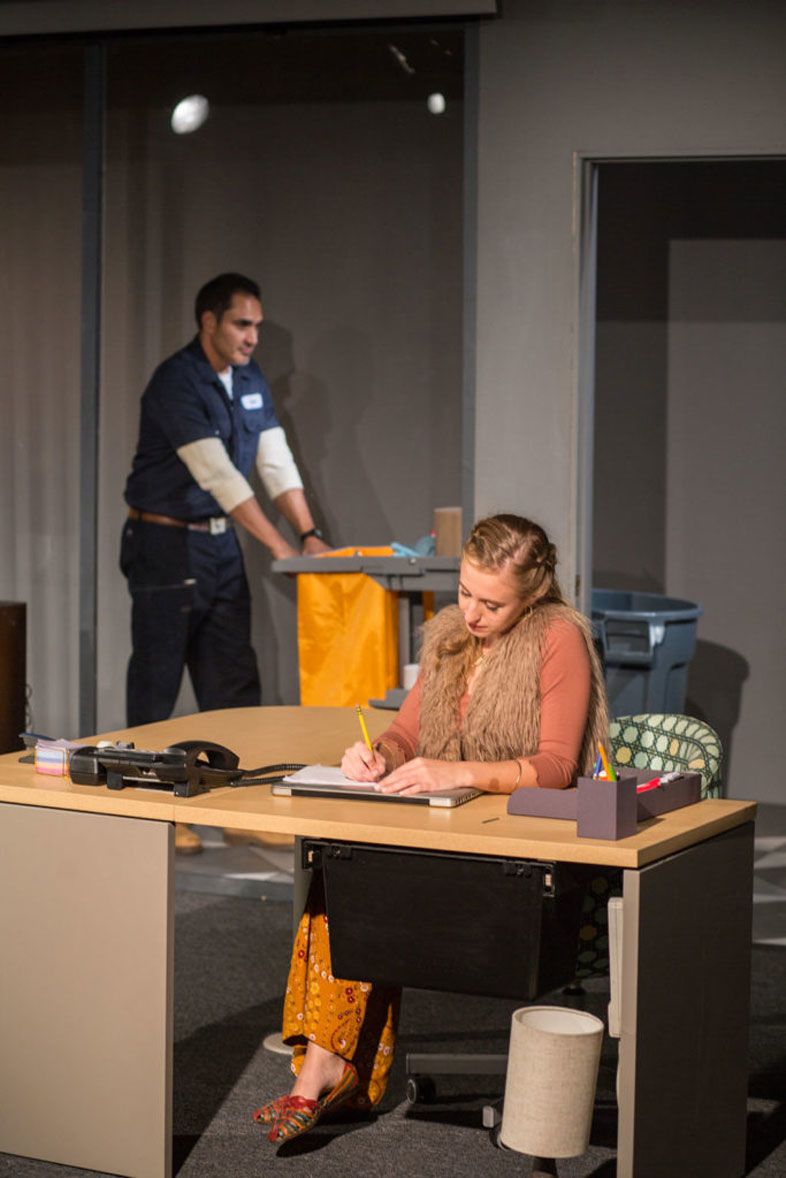Weighing the spoils of career success against the more intangible costs of selling out is an evergreen theme, especially if you’re a person of color trying to move up in a field whose rules are written and reinforced by the monied white majority. These dramatic arcs tend not to end well for the ladder climber. This year’s excellent film Sorry to Bother You took on this theme through the lens of magical surrealism; Moxie Theatre’s season opener Voyeurs de Venus did so from academic and symbolic angles.
As a genre writer, I’m all for the fresh perspective that unreality can bring to complex social issues, but sometimes it’s refreshing to see them addressed in straight-up realism, without leaning on any magical bells and whistles. For my taste, that’s the biggest strength of Moxie’s latest, Fade. Writer Tanya Saracho is most well known for her work in television: the showrunner of Vida on Starz, and a writer for Girls, Looking, and How to Get Away with Murder, she has a practiced ear for dialogue, and director Maria Patrice Amon brings out a natural, overheard-in-a-busy-café conversation style from our two actors here. They talk over each other, misunderstand, ramble off-topic, pause and consider and correct themselves—in other words, they talk like real people do, so when the play does need to make its bigger cultural points, the actors can arrive at them obliquely, without any soapboxes or throat clearing.

Race and Class Alienation Cut Both Ways in Moxie Theatre’s ‘Fade’
Javier Guerrero and Sofia Sassone in ‘Fade’ at Moxie Theatre | photo by Quasi Studios
When the play opens, protagonist Lucia (Sofia Sassone) is, in her true artist’s heart, a novelist; she’s only working this TV-writing gig to pay the bills so she can get her second book published. She’s disgusted with the Old Boys’ Club of the writers’ room, who make no secret that they see her only as a “diversity hire” and portray the Latin characters on their show in flat, tired stereotypes. The only person she can really open up to at work is the janitor who cleans her office, Abel (Javier Guerrero). But race and class alienation go both ways. Lucia’s from Mexico City and doesn’t see Abel, a native Angeleno, as a “real” Mexican; likewise, he begins by chiding her as an out-of-touch fresa (rich snob) who thinks everyone grew up having a maid.
Sassone and Guerrero have fantastic chemistry together. The road from strangers to friends to something more is never straight, and the writing and direction are confident enough to let that natural push and pull play out at its own pace. The effect for an audience member is of checking in on two coworkers every couple days as they get to know each other a bit at a time, in the midst of all the other baggage they’ve got on their minds. Lucia slowly begins investing more in succeeding at her job, but to make a name for herself, she needs “real” details to give her Latin characters, and so begins probing Abel to open up about his past. Because the artist exploiting their muse is another evergreen plotline, we suspect pretty early that this friendship is destined to go south, but it’s a real testament to the strength of Sassone and Guerrero’s dynamic that their big moments and reversals still land in powerful and surprising ways.
Sassone and Guerrero have fantastic chemistry together … their big moments and reversals land in powerful and surprising ways.
If I have one nitpick, I might wonder what exactly the musical interludes are contributing. They come on immediately every time the lights go down, always at the same high energy level, and begin to feel like jarring commercial breaks, especially because the scenes in the first act are so short. Because of this the play takes longer than it should to hook your attention, but rest easy, because once it does, you’ll be in for a penny and a pound. These characters are fascinating people to spend time with, and you can’t help becoming invested, too, in their search for a lasting common ground.
Fade, directed by Maria Patrice Amon
at Moxie Theatre through November 11
Tickets at moxietheatre.com

Race and Class Alienation Cut Both Ways in Moxie Theatre’s ‘Fade’
Sofia Sassone and Javier Guerrero in ‘Fade’ at Moxie Theatre | photo by Quasi Studios



















